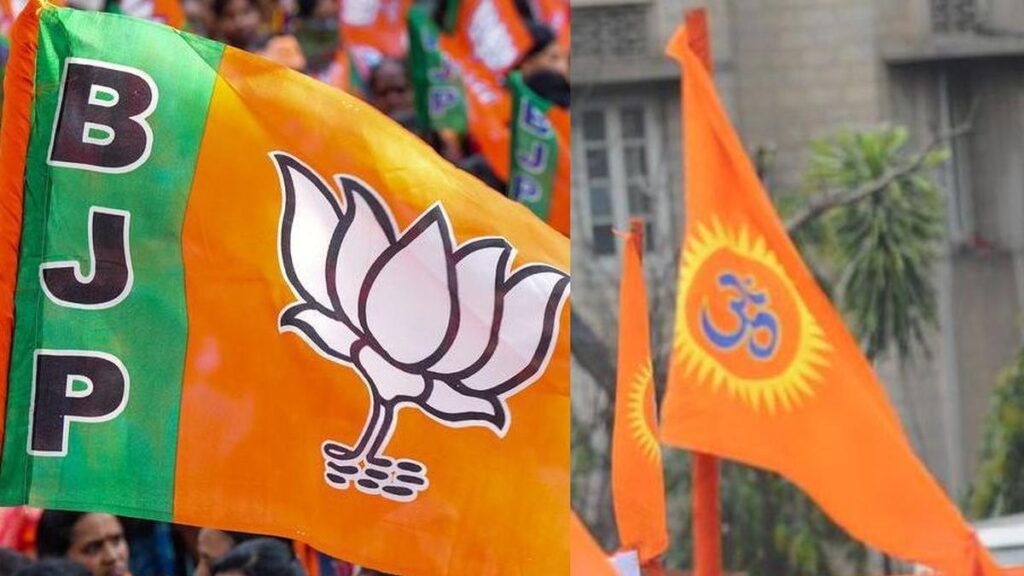The Bharatiya Janata Party is set to appoint its new National President between March 14 and March 21, aligning this leadership transition with the upcoming Akhil Bharatiya Pratinidhi Sabha meeting of the Rashtriya Swayamsevak Sangh scheduled from March 21 to 23 in Bengaluru.
This development follows the conclusion of the Delhi Assembly elections on February 8, where the BJP faced a significant electoral challenge. The party had deferred the selection of its new president until after these elections to maintain organisational focus.
According to the BJP’s constitution, the election of the National President requires that at least 50% of the state units have elected their respective presidents. As of now, elections have been completed in 12 out of 36 state units, with major states like Bihar, Uttar Pradesh, and Madhya Pradesh expected to conclude their processes within the next ten days.
The tenure of the current National President, JP Nadda, concluded in June 2024. Nadda, who assumed the presidency in January 2020, has been serving an extended term to oversee critical electoral campaigns and organisational matters.
In a strategic move to strengthen its presence in southern India, the BJP is reportedly considering appointing a woman leader from the region as its new National President. This decision aims to send a strong organisational message to the southern states, where the party seeks to expand its influence. Notable frontrunners for the position include Daggubati Purandeshwari, the current Andhra Pradesh BJP chief, and Vanathi Srinivasan, the national president of the BJP Mahila Morcha and a Member of the Legislative Assembly from Coimbatore.
Purandeshwari, aged 66, brings significant experience in organisational affairs, having joined the BJP in 2014 after leaving the Congress party. Her articulate leadership style and deep-rooted political lineage make her a strong contender for the top post. Srinivasan, on the other hand, has been instrumental in mobilising women cadres and strengthening the party’s grassroots network in Tamil Nadu.
The RSS’s ABPS meeting, slated for March 21 to 23 in Bengaluru, holds substantial significance as it serves as the highest decision-making body of the organisation. The convergence of the BJP’s leadership transition with the RSS’s annual meeting underscores the synchronised efforts of both entities to bolster organisational coherence ahead of forthcoming electoral challenges.
The BJP’s internal elections have experienced delays due to various factors, including the focus on assembly elections in states like Delhi, Maharashtra, and Haryana. These electoral battles necessitated a postponement in organisational polls to ensure undivided attention on campaigning and voter outreach.
The process for organisational elections within the BJP has commenced, with members of the National Council and State Councils, responsible for electing the party president, currently being chosen. At least 50% of the state units must complete their organisational elections before the national president can be elected. So far, only four states have completed the process of electing their state presidents.
The BJP’s strategic emphasis on southern India reflects its intent to penetrate regions where it has traditionally faced electoral challenges. By potentially appointing a leader from the South, the party aims to resonate with regional aspirations and cultural nuances, thereby fostering greater acceptance among southern electorates.
The upcoming ABPS meeting will likely address the RSS’s centenary celebrations, organisational expansion, and socio-cultural initiatives. The synchrony between the BJP’s leadership transition and the RSS’s strategic deliberations signifies a concerted effort to reinforce ideological cohesion and operational efficiency within the broader Sangh Parivar.
As the BJP gears up for this pivotal leadership change, the party’s rank and file anticipate a renewed organisational vigour that aligns with the evolving political landscape. The new president’s mandate will encompass not only electoral strategising but also fostering inclusivity and addressing regional aspirations to consolidate the party’s pan-India presence.
The forthcoming weeks are poised to be crucial for the BJP as it navigates this leadership transition, with implications that could reshape its organisational dynamics and electoral prospects in the near future.
The BJP’s decision to potentially appoint a woman leader from southern India as its National President marks a significant shift in its organisational strategy. This move is seen as an effort to break traditional barriers and promote gender inclusivity within the party’s top echelons. By considering leaders like Purandeshwari and Srinivasan, the BJP aims to project a progressive image that resonates with both urban and rural constituencies.
Purandeshwari’s political journey has been marked by her adaptability and resilience. Her transition from the Congress to the BJP in 2014 was a strategic move that underscored her alignment with the BJP’s ideology and vision. As the daughter of the late NT Rama Rao, a revered figure in Andhra Pradesh politics, her leadership is expected to leverage her familial legacy to strengthen the BJP’s foothold in the region.




 Maharashtra Minister Steps Down Amid Aide’s Arrest for Murder
Maharashtra Minister Steps Down Amid Aide’s Arrest for Murder 